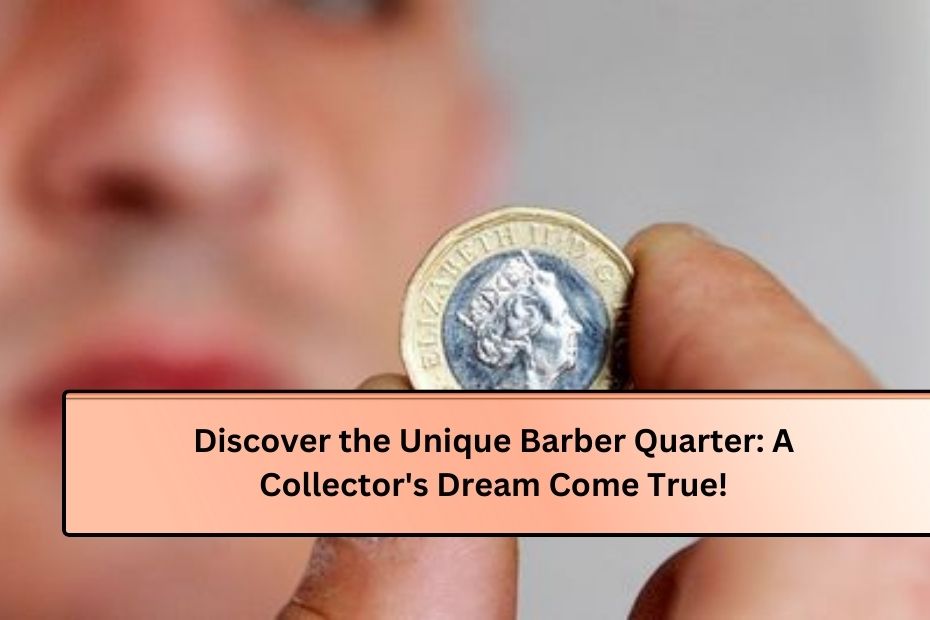Collecting coins can be an exciting hobby, especially when you discover something unique and special. One fascinating piece is a Barber Type II Reverse quarter dollar that has been transformed with a Masonic Order medal. This special item is highlighted by collector Bob Moffatt in the Fall 2024 issue of the Journal of the Barber Coin Collectors’ Society. This article will break down the details of this remarkable coin, exploring its history, design, and significance.
| Feature | Details |
|---|---|
| Coin Type | Barber Quarter Dollar |
| Minting Period | 1892 – 1916 |
| Collector | Bob Moffatt |
| Unique Feature | Masonic Order medal engraved on the obverse |
| Obverse Type | Type II (Liberty) |
| Reverse Type | Type II (Eagle covering “E” in UNITED) |
| Gold Composition | Likely 14 karat gold (58.3% gold, 41.7% alloy) |
| Engravings | “WORCESTER” and “R.A. CHAPTER” |
| Recipient | Charles H.L. Barrett |
| Masonic Symbolism | Keystone shape representing the 14th degree of the York Rite |
| Historical Significance | Story of Hiram Abiff as a lesson of loyalty in Masonic teachings |
| Estimated Value | Sold for approximately $7,200 |
What is a Barber Quarter Dollar?
The Barber quarter dollar is a U.S. coin minted from 1892 to 1916. It was designed by Charles E. Barber, who was the chief engraver of the U.S. Mint at the time. These coins are well-known among collectors due to their classic design and historical value.
The Barber Type II Reverse
The Barber quarter has two main types of reverses. The Type II reverse, used on some quarters from 1892 to 1900, features an eagle. Notably, on this version, the eagle’s left wing covers the letter “E” in the word “UNITED,” hiding part of it. This unique characteristic helps collectors identify the coin.
Details of the Unique Medal
Collector Bob Moffatt has an interesting piece where the obverse (front side) of the Barber quarter is replaced by a beautifully engraved Masonic Order medal. This unique design means that the original front of the coin, which featured Liberty, is no longer visible. The original Type II obverse showed Liberty with no center cartilage in her ear and a deeply forked hair ribbon near her neck.
The Masonic Order Connection
Understanding Masonic Symbols
Masonry is a fraternal organization that uses symbols and rituals to teach moral lessons. The overlay on Moffatt’s coin is shaped like a keystone, which symbolizes the 14th degree within the York Rite of Freemasonry. This degree is known as the Royal Arch Chapter, which connects Masonic lodges in a specific area.
The Gold Overlay
Moffatt suspects that the gold overlay on the coin is likely made of 14-karat gold, meaning it consists of 58.3% gold and 41.7% other metals. This adds to the coin’s value and significance.
Engravings on the Coin
On the left side of the silver coin, the word “WORCESTER” is engraved, while the right side shows “R.A. CHAPTER,” indicating its connection to the Royal Arch Chapter in Worcester, Massachusetts. The top of the keystone has the name “CHAS. H.L. BARRETT” engraved, suggesting this medal was presented to a member of the Masonic community.
The Story of Charles H.L. Barrett
Charles H.L. Barrett was likely active in the Royal Arch Chapter and may have overseen various lodge activities. The central design on the coin features a five-pointed star with lightning bolts, which represents Barrett’s Masonic mark. Surrounding this star is an enameled circle with the letters “HTWSSTKS.”
Meaning of HTWSSTKS
The letters “HTWSSTKS” stand for “Hiram The Widow’s Son Sent To King Solomon.” This reference is significant in Masonic teachings. Hiram Abiff, known as Hiram the Widow’s Son, is an important figure in Masonic lore. He was the chief architect of King Solomon’s Temple. His story teaches about loyalty and integrity.
Hiram Abiff’s Legend
According to legend, Hiram Abiff was approached by non-believers who tried to extract secret passwords from him. Hiram bravely refused to betray the secrets of the Masons and was ultimately killed for his loyalty. His story serves as a moral lesson for all Freemasons, emphasizing the importance of standing firm in one’s principles.
Conclusion
The Barber Type II quarter dollar with the Masonic Order medal is more than just a coin; it represents a rich history of American coinage and the values of Freemasonry. Collectors like Bob Moffatt recognize the significance of such pieces, as they tell stories that connect us to the past. This unique combination of the coin and Masonic medal highlights the artistry involved in coin production and the enduring legacy of Masonic teachings. For those interested in collecting, understanding the background of such items can enhance their appreciation and value.
FAQs
1. What is a Barber Quarter?
A Barber Quarter is a U.S. coin minted from 1892 to 1916, designed by Charles E. Barber. It features the profile of Liberty on the obverse and an eagle on the reverse.
2. What is a Type II Reverse on a Barber Quarter?
The Type II Reverse is a specific design used on Barber quarters where the eagle’s left wing covers the letter “E” in the word “UNITED.” This design is used on some quarters minted from 1893 to 1900.
3. What makes this Barber Quarter unique?
This particular Barber Quarter is unique because its obverse has been replaced with a gold Masonic Order medal, which is ornately engraved, making it a collectible piece with significant historical and artistic value.
4. Who was Charles H.L. Barrett?
Charles H.L. Barrett was likely a member of the Royal Arch Chapter in Worcester, Massachusetts, and the medal was possibly presented to him for his service within the Masonic community.
5. What does the engraving “HTWSSTKS” mean?
The engraving “HTWSSTKS” stands for “Hiram The Widow’s Son Sent To King Solomon,” referring to an important figure in Masonic lore. Hiram Abiff is celebrated for his loyalty and integrity.

